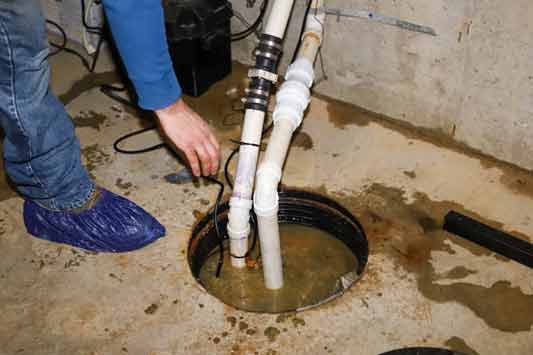
Water is an essential resource that is vital for our daily lives. It serves various purposes, from drinking and cooking to cleaning and bathing. However, when it comes to the continuous flow of water into the sump pit, there are several important factors to consider. Here we get into the implications of this continuous water flow and the potential consequences it may have.
The Purpose and Function of a Sump Pit
A sump pit is a basin typically located in the basement or crawl space of a building. Its primary purpose is to collect water that has accumulated due to various reasons such as groundwater, rainwater, or floods. The sump pump installed in the sump pit then pumps this water away from the building to prevent flood damage in your home. It plays a crucial role in maintaining a dry and safe environment.
The Benefits of Continuous Water Flow
Continuous water flow into the sump pit can offer several benefits. One significant advantage is ensuring that the sump pump stays lubricated. The constant presence of water in the sump pit allows the pump to operate smoothly and reduces the risk of damage or malfunctions. Additionally, a continuous flow of water helps prevent the sump pit from drying out, which can cause cracks and structural issues. It also reduces the buildup of stagnant water, minimizing the likelihood of unpleasant odors and the growth of mold and bacteria.
Potential Issues Caused by Continuous Water Flow
While there are benefits to continuous water flow, it is essential to consider potential issues that can arise as well. One of the primary concerns is excessive water inflow, which can overwhelm the sump pump’s capacity. If the volume of water entering the sump pit exceeds the pump’s ability to remove it, the pit may overflow, leading to potential flooding and water damage. Additionally, continuous water flow can strain the sump pump, causing premature wear and reducing its lifespan.
Another significant issue is energy consumption. Continuous water flow requires the sump pump to operate continuously, leading to increased energy usage. This can result in higher utility bills for homeowners and commercial properties alike. It is crucial to strike a balance between maintaining an adequate flow of water for pump lubrication and reducing excessive water intake to conserve energy.
Methods to Regulate Water Flow
To address the potential issues associated with continuous water flow into the sump pit, there are several strategies that can be employed.
Sump Pit Cover
Installing a sump pit cover can help regulate water flow and prevent excessive water from entering the pit. The cover acts as a barrier, allowing only necessary water to enter while keeping out debris and reducing evaporation.
Check Valve
A check valve installed in the sump pump discharge pipe can help regulate water flow and prevent backflow. It ensures that water pumped out by the sump pump does not flow back into the pit, reducing the likelihood of overflow and flooding.
Sump Pump Maintenance
Regular maintenance of the sump pump is crucial to ensure its efficient operation and longevity. This includes cleaning the pit and pump, inspecting for any damage or wear, and testing the pump’s functionality. Proper maintenance can help prevent issues caused by continuous water flow or cause a premature replacement of the sump pump.
Water Flow Monitoring Systems
Advanced water flow monitoring systems are available that can regulate water intake into the sump pit automatically. These systems measure the water level and adjust the flow accordingly, preventing excessive water from overwhelming the pump while ensuring optimal pump lubrication.
In Conclusion
Continuous water flow into the sump pit can have both positive and negative impacts. While it helps maintain pump lubrication and prevents issues associated with stagnant water, excessive water intake can lead to flooding, increased energy consumption, and strain on the sump pump. Employing methods to regulate the water flow, such as using a sump pit cover, installing a check valve, conducting regular maintenance, or implementing water flow monitoring systems, can help mitigate these potential issues. It is crucial for homeowners and property managers to strike the right balance to ensure the efficient operation of the sump pump and the overall safety and well-being of the building.
[…] This pipe transports pumped water from the sump pump to the discharge point on the property. If it is blocked, this water will find a way to cycle back into the sump pit, and the sump will continue to run without actually pumping any water. […]